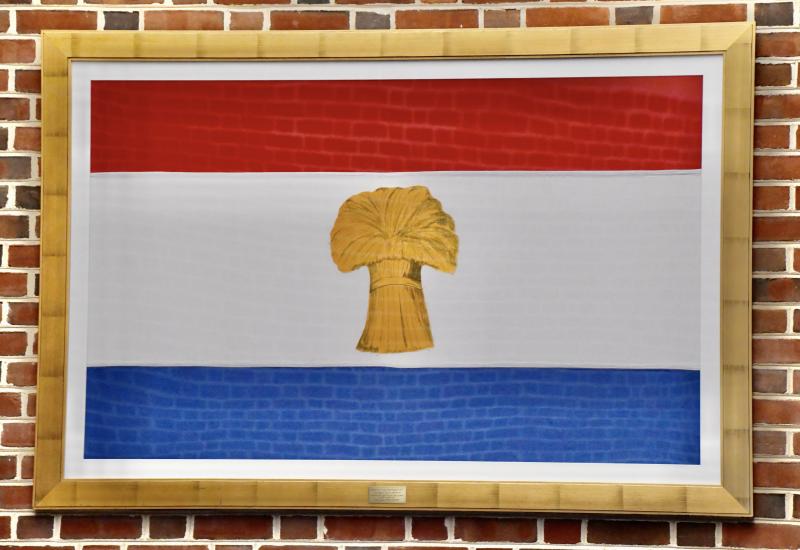Why is a wheat sheaf a symbol of Sussex County?
How did a wheat sheaf become a symbol for Sussex County? It’s on the county and state flag and county seal.
Continue reading and you will have a greater appreciation for a wheat sheaf.
It may seem strange, but Sussex County has only had an official flag since 1974. It’s celebrating 50 years this year.
That’s a long time span between the 1631 founding of Lewes by Dutch colonists to the 1970s. Sussex County officially became a county in 1683 thanks to a charter grant to governor and proprietor of Pennsylvania and Delaware William Penn from James, Duke of York.
I guess no one thought about a Sussex County flag, at least for more than 300 years.
The county seal is another story. The current seal is a colorized version of the original Willam Penn seal, which includes that famous wheat sheaf and three circles for the state’s three counties.
Planning for the county’s bicentennial event put the wheels in motion for a flag. Willam Scott, a member of the planning committee, and other members discussed the lack of a county flag.
It was Scott who went on a mission to create a flag. He did extensive research on the history of Sussex County with a goal in mind of a simple but symbolic design.
He went back to the flag of the Netherlands since the Dutch were the first Europeans to settle in the county. He used the country’s flag with three equal bars of red, white and blue as a starting point.
He ended up using that flag, and making the stripes wider, as the background of the new Sussex flag.
He also wanted to symbolize English rule, so he used the seal William Penn created for his newly founded Sussex County in 1683. For Sussex, Penn used a sheaf of wheat; for Kent, three ears of corn; and for New Castle, a castle.
It was that sheaf of wheat that Scott used at the center of the new Sussex flag.
Using his design with red, white and blue stripes and a sheaf of wheat, a seamstress at their family furniture store, J. Conn Scott in Selbyville, stitched the first county flag.
Scott unveiled the flag during an October 1974 Sussex County Council meeting, and council was quick to adopt it Dec. 3.
In early 2007, Scott donated the prototype he had developed to the county. The framed flag is on display inside the Sussex County administration building lobby.
Incidentally, J. Conn Scott is celebrating its 100th anniversary this year at its stores in Selbyville and Rehoboth Beach.
Looking for a Sussex flag? Check out Cape Pole and Flag at capepoleandflag.com.
A lover of history
An avid history buff, Scott spent his adult life with his wife, Janet, traveling to historic locations all over and visited England each year.
After they both graduated from the University of Delaware, he and Janet took over the family business in the late 1950s, which was founded by his father in 1924.
William passed away at his home in Salisbury, Md., last May at the age of 89.
Wheat is a major crop
The use of wheat in the flag demonstrates the importance of agriculture to the county. Nearly 40% of county land (more than 200,000 acres) is farmed. Corn is the top crop, followed by soybeans and wheat. Sussex County farmers are some of the most productive in the United States.
Wheat sheaf on state flag
The state flag, adopted in 1913, contains a more intricate pattern, which is the state seal and highlights the importance of shipping, wheat (there it is again), corn, an ox and farmer for agriculture, and a Revolutionary War soldier.
The colors, a buff diamond surrounding the seal, and a colonial blue background have been noted as the colors of George Washington’s uniform.
Thanks to Chip Guy, county director of public information, for his research on the history of the flag.





















































